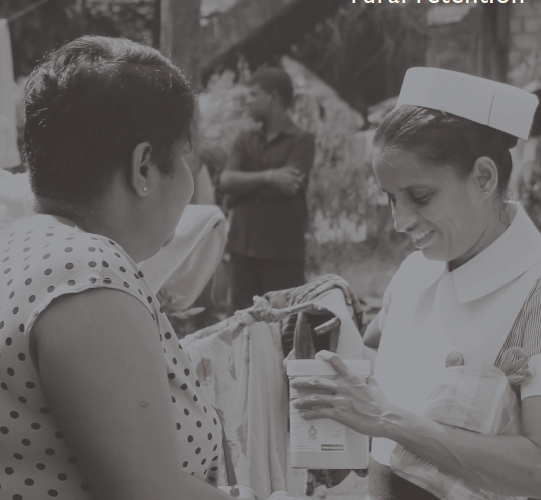A WHO Report: Improving retention of health workers in rural and remote areas. Case studies from the WHO South-East Asia Region
This report published by the WHO South-East Asia Regional Office (SEARO) provides case studies that document the rationale for implementing policies intended to improve retention of health workers, the process of implementation and the intended and actual impacts of these policies.
The case studies were conducted in six countries: Bhutan, India (Chhattisgarh state), Indonesia, Myanmar, Sri Lanka and Thailand.
Dr Poonam Khetrapal Singh, Regional Director at the WHO SEARO, highlights the importance of analysing workforce retention policies:
As the case studies demonstrate, concerted and coordinated action across sectors and stakeholders can forge real gains, from which Member States across the Region and the world can draw valuable lessons.

In the South-East Asia Region, interventions have been rolled out in bundles, and are aligned with the 2010 WHO guidelines on rural retention of health workers. They focus primarily on education, financial incentives, regulation and personal support interventions.
According to the report, four key messages that emerged from the analysis of these case studies, and these must be taken into account when efforts to improve retention in rural areas are being considered in any country. These are:
- the limited evidence base from which to draw information to shape an approach;
- the need to consider multiple stakeholder engagement when identifying and developing relevant interventions;
- the need to coordinate, "bundle" and evaluate interventions; and
- the need to look to develop financial sustainability to enable workforce stability
The report also covers some fundamental areas that should be considered to allow successful implementation of workforce retention policies. These are:
- Rural retention continues to be a priority.
- The WHO 2010 framework continues to have utility, but must be updated.
- Rural retention must be examined within the broader HRH and labour market context.
- Rural retention must focus on skills and teams, not individual workers.
- Effective retention needs good governance and management.
- More policy emphasis must be placed on the gender dimension in the workforce.
- Evaluation is generally weak and requires better data, systems and knowledge sharing.
- Educational interventions are most commonly reported. More attention needs to be given to new roles that focus on determining the functions and competency of the health workforce.
- The sustainability and alignment of funding sources need to be improved.
- Health service design and technology are part of the solution.
The report concludes
the most appropriate combination of interventions to increase health workforce retention in rural areas will vary considerably from country to country, and will depend on funding availability, system and organizational culture, capacity, workforce profile, motivations and level of understanding of labour market dynamics.
Since retention of the health workforce continues to be a major issue in all six countries, there is a need to have access to a policy framework such as is set out in the WHO 2010 guidelines, and an updated assessment that the guidelines can continue to be fit for policy and practice.
Read the full report here.

